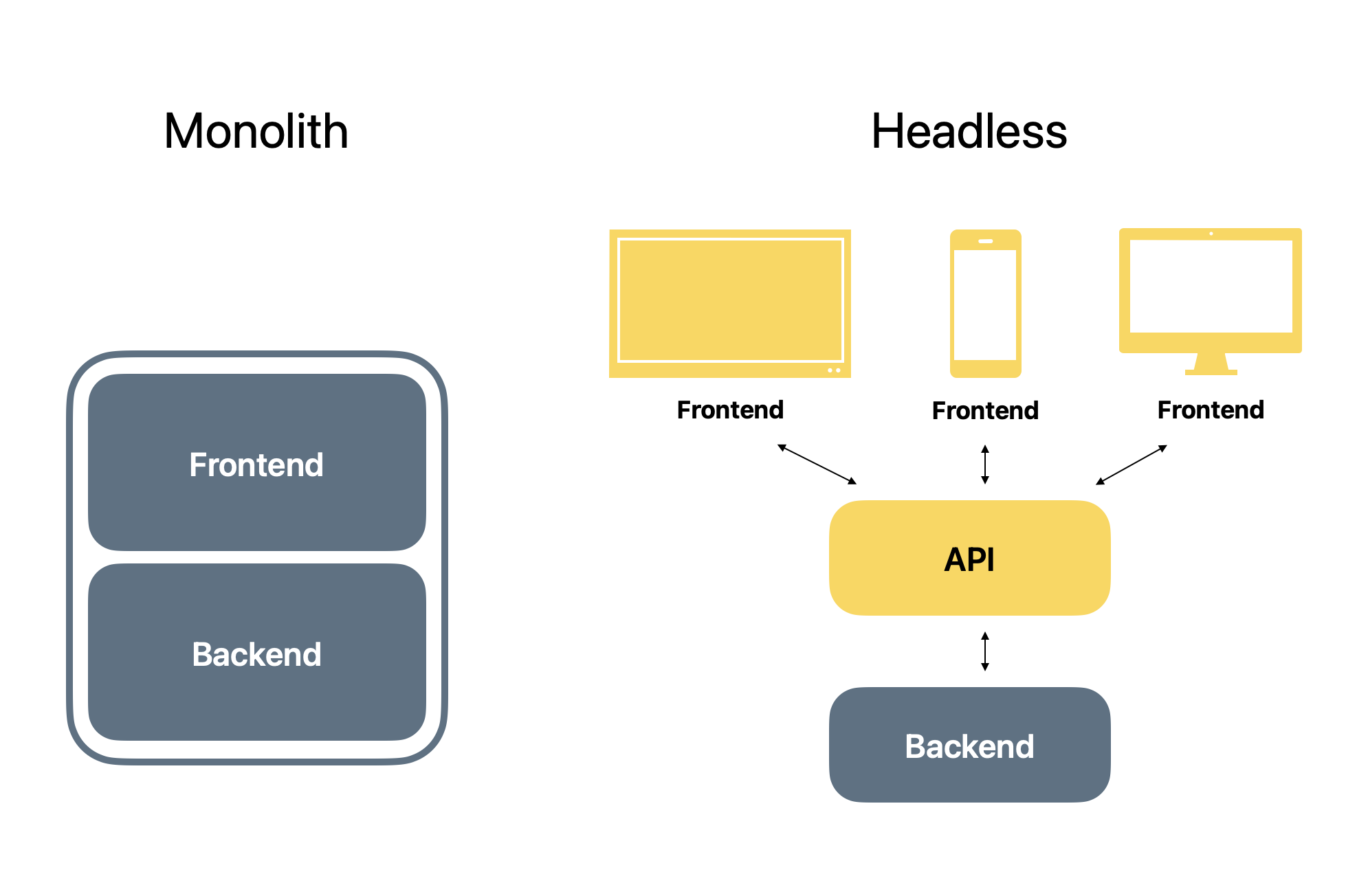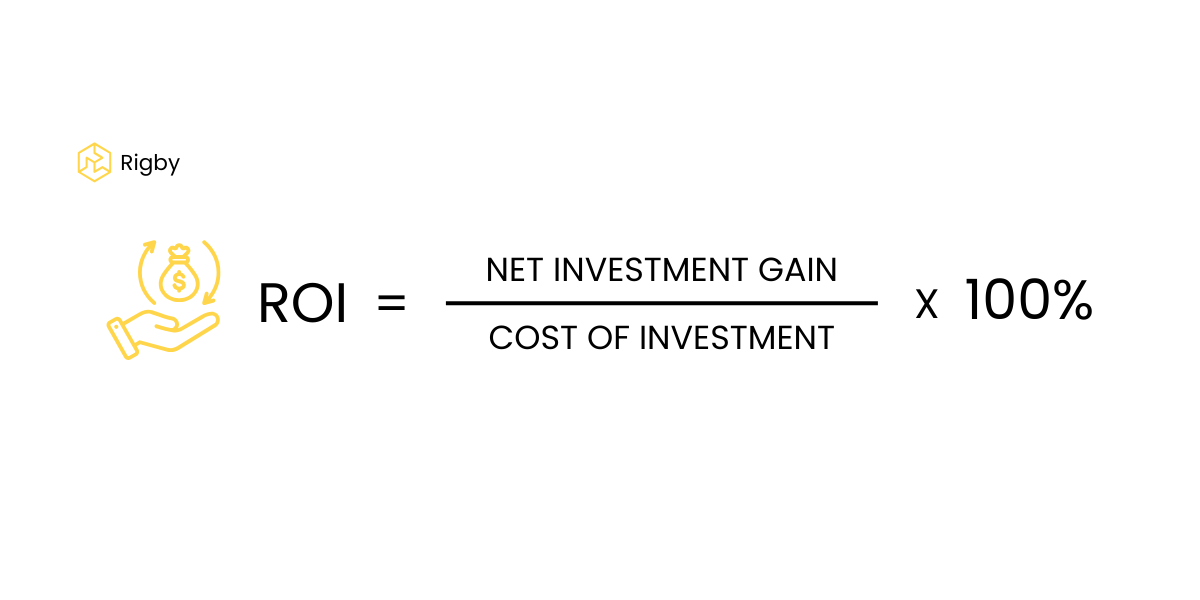Is Investing in a New eCommerce Solution Worth It?
By Karolina Jakubowicz
By Karolina Jakubowicz

In today's competitive business landscape, having a suitable eCommerce platform is of paramount importance for sustained success. Whether you're a small business owner or a leader in a large corporation, this article is designed to help you make an informed choice about investing in eCommerce solution.
An eCommerce system is much more than just a platform for selling products or services online - it also can:
Significantly enhance the customer experience
Increase sales opportunities
Reach a global audience
Break free from geographical limitations
Help understand customers through integrated analytics tools
Foster brand loyalty
Manage inventory
Adapt to changing market trends
Integrate with other digital tools
So, by investing in a suitable eCommerce solution, businesses can stay ahead of the competition and ensure sustained growth and success in the digital ecosystem.
Many businesses find themselves grappling with systems that no longer meet their evolving needs. When evaluating the effectiveness of your current eCommerce platform, it is essential to identify its limitations, considering the following key aspects:
Performance and Speed: Even a one-second delay directly correlates with a 7% decrease in conversion rates (Source). Slow loading times and frequent website crashes can frustrate customers and lead to lost sales. Assess your site's performance, especially during high-traffic periods, to identify any issues related to speed or reliability.
Scalability: If your business is growing, your eCommerce system should be able to grow with it. Having a system that can handle high traffic volumes and large numbers of orders, especially during peak periods like Black Friday, is essential. If your current setup fails to offer zero downtime and efficient order processing during these critical times, consider upgrading to a scalable architecture.
User Experience (UX) and Design: A non-intuitive or outdated user interface can negatively impact the online shopping experience. Are you able to tailor the layout and design to align with your brand identity? Evaluate whether your system allows for a seamless and engaging user journey and if it supports modern design standards, including responsiveness and customization.
Integration Capabilities: An inflexible system that struggles to integrate with other essential business tools can create operational inefficiencies and data silos. Can your platform seamlessly connect with other software, such as inventory management or CRM systems?
Functionality and Features: Assess whether your current system offers the features and functionality that your business and customers need, such as advanced search options, personalized recommendations, and efficient checkout processes.
Data Analytics and Reporting: Inadequate analytics and reporting capabilities can limit your ability to understand customer behaviour, track sales trends, and make informed strategic decisions.
Automation: Manual tasks like updating orders from the store to the ERP system can be time-consuming and error-prone. Modern eCommerce solutions automate these processes, leading to more efficient operations and reduced likelihood of mistakes.
Poor Admin Function: If your team is bogged down by inefficient and unintuitive tooling, it impacts productivity negatively. Migrating to a platform with a more intuitive interface can drastically improve operational efficiency and output.
High Total Cost of Ownership (TCO): The real cost of legacy platforms extends beyond licensing fees and integration costs. Keeping track of these costs over several years often reveals that the TCO of legacy systems is much higher than anticipated.
The rise of composable commerce is revolutionizing the way businesses operate and interact with customers. But what it really means?
Composable commerce refers to a shift from the traditional monolithic, one-size-fits-all eCommerce platforms to a more agile and customizable online platform. It is built on the idea of creating a tailored online presence by assembling various 'best-of-breed' components – such as inventory management, customer relationship management, and payment processing systems – into a cohesive, flexible solution.
This means that instead of being confined to the limitations of a single platform, businesses can now dynamically adapt their online infrastructure to stay ahead in a competitive and ever-changing market.

This evolution towards composable commerce paves the way for the next significant trend in eCommerce: headless platforms. Headless eCommerce platforms, aligning perfectly with the principles of composable commerce, further empower businesses to tailor their digital strategies.
Businesses are increasingly recognizing the need to adapt to changing consumer behaviors and technological advancements. This realization is driving a shift towards headless eCommerce platforms, marking a critical juncture for businesses considering replatforming.
Headless eCommerce separates the frontend (presentation layer of a website) from the backend (logic and storing data). This decoupling offers several advantages that align with the requirements of the new digital era.
Headless approach allows for enhanced flexibility and customization, as businesses can tailor the user interface without backend constraints. It supports omnichannel capabilities, enabling content deployment across various platforms like mobile apps and social media.
What is more, this architecture improve site performance and user experience with faster loading times, facilitate easier integrations with advanced features like AI and analytics, and offer better scalability to handle growth and traffic spikes.
Additionally, the separation increases development speed and enhances security, as frontend compromises don’t affect the backend.
Overall, headless eCommerce helps future-proof businesses by allowing rapid adaptation to market trends.
Expand your knowledge about headless eCommerce by exploring our other relevant article - "Understanding Headless eCommerce - Glossary of Terms and Concepts".

In the previous paragraph, we discussed the significance of headless eCommerce platforms in meeting the requirements of the new digital era. Building on this, it's worth exploring how Medusa.js, an emerging player in the headless eCommerce space, aligns with these modern business needs and future trends.
Medusa.js stands out as a customizable, open-source headless eCommerce platform designed to offer businesses the flexibility and agility needed in today's fast-paced market. Here's its key benefits:
Open-source: Medusa.js's open-source nature allows for a high level of customization and control, empowering businesses to build exactly what they need without being boxed into the limitations of a traditional eCommerce platform. This aspect of Medusa.js is particularly appealing to businesses looking to future-proof their operations, as it enables them to adapt quickly to future technological advancements and market shifts.
Modular Architecture: Medusa.js is built with a modular approach, allowing businesses to plug in or remove functionalities as needed. This ensures that the platform remains lean and efficient.
Developer-friendly: With a rich set of APIs and a vibrant developer community, Medusa.js ensures businesses have all the necessary resources to build and maintain their eCommerce platform.
Core Features: It provides all the essential core features for selling in multiple markets, including order fulfillment from different warehouses or sales channels. This allows for defining various payment and delivery methods for each market, making expansion into new markets quick and efficient.
Scalability: Medusa.js is designed to grow with businesses. Whether you're a startup or an established enterprise, Medusa.js can handle the demands of your operations.
Integrated Tools: From inventory management to payment processing, Medusa.js offers integrated tools that streamline eCommerce operations.
To sum up, adopting a headless eCommerce approach and leveraging technologies like Medusa.js will be pivotal. It's not just about staying current, it's about being prepared for the future of eCommerce.
Discover more about Medusa.js by exploring our other article that provides further relevant details - "The Future of eCommerce: Why investing in Medusa technology makes sense?".
Switching to a composable commerce platform, like Medusa.js, can have higher initial costs due to separate maintenance of frontend and backend systems. However, in the long term, it is more cost-effective than a monolithic architecture. This is because composable platforms offer greater scalability, more efficient updates and maintenance, and the ability to integrate new features or technologies more easily. Additionally, their improved performance and user experience can lead to increased customer satisfaction and revenue, offsetting the initial investment.
The initial financial investment in acquiring a new system is just the tip of the iceberg. This includes the purchase price of the software or platform and the costs associated with its implementation. Implementation costs can vary widely depending on the complexity of the online store, the need for custom solutions , and whether data migration from an old system is required.
Medusa.js, being open-source, eliminates platform costs, which is a significant advantage. Businesses only incur costs for customization to their specific needs.
This phase also often involves expenses related to staff training and potentially hiring external consultants or developers to ensure a smooth transition.
After the system is up and running, ongoing costs come into play. These can include regular subscription fees if the system is cloud-based or SaaS (Software as a Service). Maintenance costs are also a key factor, encompassing updates, technical support, and potential upgrades. Additionally, depending on the system, there may be costs related to hosting, additional user licenses, and integration with other tools or platforms. With Medusa.js, there are no regular subscription fees since it's an open-source platform.
Often overlooked are the hidden costs associated with switching systems. Downtime during the transition, though less with a modular system like Medusa.js, can lead to lost productivity and, in some cases, lost revenue. Changes in business processes to adapt to the new system can also incur costs, both in terms of time and potential disruption to regular operations. Indirect expenses may include the impact on employee morale and adapting to a new system, which can temporarily reduce efficiency.

Calculating the ROI of a new eCommerce system requires a comprehensive analysis of both tangible and intangible factors. It's important to set realistic benchmarks that align with industry standards, your business's specific circumstances, and future growth objectives.
Initial Investment Costs: Include all expenses related to acquiring and implementing the new system, such as purchase price, installation, customization, data migration, and staff training.
Operational Cost Savings: Calculate reductions in operational costs post-implementation, like lower maintenance costs, decreased need for manual intervention, and reduced downtime.
Revenue Increase: Assess the increment in sales attributable to the new system, which might be due to improved user experience, increased customer retention, higher conversion rate, and expanded market reach.
Efficiency Gains: Factor in the value of increased efficiency, such as faster order processing, better inventory management, and improved customer service.
Industry Standards: Research current ROI benchmarks within your industry. This can vary widely depending on the sector, market position, and size of the business.
Payback Period: Determine an acceptable payback period for your investment. In eCommerce, a 1-3 year payback period is often considered reasonable, but this can vary.
Growth Projections: Align ROI expectations with your long-term growth projections. A system that supports scalability and future expansion might warrant a higher initial investment.
Competitive Advantage: Consider the ROI in terms of gaining a competitive advantage, such as being able to offer unique customer experiences or advanced functionalities that competitors lack.
Intangible Benefits: While hard to quantify, consider intangible benefits like brand reputation, customer loyalty, and market positioning, which can have a long-term positive impact on ROI.
The transition to new eCommerce solutions opens a realm of possibilities for businesses. From driving sales and improving operational efficiencies to enhancing user experiences and ensuring long-term scalability, the benefits are multifaceted, paving the way for sustained success in the digital era.
New eCommerce solutions can significantly impact a business's bottom line. Sales growth is often the most immediate and noticeable benefit, as these platforms can better attract and retain customers through improved online experiences. Enhanced operational efficiency is another key advantage. Modern eCommerce solutions streamline various processes — from inventory management to order fulfillment — thereby reducing manual effort and minimizing errors. Additionally, the user experience is greatly enriched through intuitive designs, easier navigation, and faster load times, all of which contribute to higher customer satisfaction and increased loyalty.
Today’s eCommerce platforms offer sophisticated tools for personalization, allowing businesses to tailor their online storefronts to individual customer preferences and behaviors. This level of personalization leads to deeper customer engagement. Businesses can leverage data analytics to understand customer needs better and provide personalized recommendations, targeted promotions, and tailored content, creating a more meaningful and engaging shopping experience for each user.
One of the greatest advantages of modern eCommerce solutions is their scalability. As your business grows, these platforms can easily scale up to handle increased traffic, more extensive product catalogs, and expanded customer bases. This scalability is crucial for businesses looking to grow without being hampered by technological limitations. Moreover, these solutions are designed to be adaptable, ensuring that businesses can stay abreast of the latest trends and technologies. By choosing a platform that evolves with the digital landscape, businesses can future-proof themselves, ensuring they remain competitive and relevant in the ever-changing world of eCommerce.
By identifying potential risks and implementing good strategies, businesses can minimize the challenges associated with migrating to a new eCommerce system, ensuring a smoother transition and a more secure and efficient operational environment post-migration.
Data Loss and Security Risks: Migrating to a new system carries the risk of data loss or breaches, which can have serious implications for both the business and its customers. Implement robust security measures to protect data during and after the migration. This includes encryption, secure data transfer protocols, and regular security audits. Also, ensure all data is backed up before migration to prevent any loss. Regular backups should also be part of the routine post-migration.
System Downtime: Transitioning to a new platform might involve a period of downtime, which can impact sales and customer experience. Instead of a full-scale immediate switch, consider a phased approach to migration. This allows for a smoother transition and the ability to address issues in stages.
Cost Overruns: There's a risk of underestimating the financial resources required for migration, leading to unexpected expenses. Have a clear budget that includes contingency funds for unforeseen costs. Regularly review and adjust the budget as needed throughout the migration process.
Integration Issues: New systems may face compatibility challenges with existing tools and software, disrupting business operations. Before migration, plan thoroughly and conduct extensive testing to identify potential issues.
Adoption Challenges: There is a risk that staff may struggle to adapt to the new system, leading to reduced efficiency or satisfaction, so provide comprehensive training and resources to your staff.
Performance Problems: The new system may not perform as expected, impacting the user experience and potentially sales. Keep customers informed about the migration process, especially if there might be service interruptions. Post-migration, provide resources to help them navigate the new system. After migration, continuously monitor the system’s performance and user feedback to promptly address any issues and optimize the system.
Audit Current System: Begin by thoroughly assessing your current eCommerce platform to understand its strengths and limitations.
Define Objectives: Clearly articulate what you want to achieve with the new platform, be it improved performance, better customer experience, scalability, etc.
Timeline and Milestones: Establish a realistic timeline for the migration, including key milestones and deadlines.
Resource Allocation: Determine the resources (budget, personnel, technology) required for the migration and allocate them accordingly.
TCO: Evaluate the total cost of ownership (TCO) for all eCommerce platforms to ensure that you make the right business decision for your company.
Risk Assessment: Identify potential risks and challenges and develop strategies to mitigate them.
Internal Stakeholders: Engage decision-makers and department leads who will be affected by the migration.
Platform Partners: Coordinate with the new platform providers for technical and strategic support.
In-House Marketing and IT Teams: Involve these teams for insights on marketing strategies and technical requirements.
Search and Marketing Agencies: Consult with these agencies for SEO and marketing transition strategies.
eCommerce Agencies: Leverage their expertise for specialized ecommerce guidance.
Audit Existing Data: Review and organize your data – product information, customer data, order history, etc.
Cleanse Data: Remove outdated or unnecessary data.
Backup Data: Ensure you have a full backup of all your data to prevent any loss during the migration.
Configure the New Platform: Set up the basic functionalities of the new platform as per your requirements.
Custom Development: If needed, develop custom features or integrations specific to your business processes.
Design and User Experience: Customize the design and layout to ensure a seamless user experience.
Migrate in Stages: Start with less critical data and gradually move to more important data.
Validate Data Post-Migration: Check for data integrity and accuracy.
Integrate Essential Tools: Connect your new platform with necessary third-party tools like CRM, ERP, payment gateways, etc.
Test Integrations: Ensure that all integrations work smoothly.
Functional Testing: Test all functionalities of your new site to ensure they are working as expected.
Performance Testing: Check the site’s performance under different conditions.
Security Testing: Ensure all security measures are in place and effective.
Staff Training: Train your team on how to use the new system effectively.
Prepare Support Materials: Create user manuals or guides for reference.
Soft Launch: Consider a phased approach or soft launch to minimize impact.
Monitor Closely: After going live, monitor the website’s performance and user feedback closely.
Be Ready for Immediate Fixes: Have a team ready to address any unexpected issues.
Clear Communication: Keep all stakeholders, including customers, informed about the migration process and expected changes.
Phased Approach: Consider implementing the migration in phases to minimize disruptions and allow for troubleshooting. Dive deeper into this topic by checking out our related article - "The ways and the process of migrating to headless eCommerce".
Training and Support: Provide adequate training and resources to your team for a smooth transition.
Monitor System Performance: Regularly monitor the new system for any performance issues and address them promptly.
Customer Feedback: Gather customer feedback to understand their experience with the new system and make necessary adjustments.
Update and Upgrade: Keep the system updated with the latest features and security patches.
Refine and Optimize: Continuously look for opportunities to refine and optimize the system for better performance and user experience.
Cost Management: Continuously review and manage operational costs to ensure the new system remains cost-effective.
Investing in a new eCommerce solution in the era of composable commerce is a strategic decision with far-reaching implications. It requires careful consideration of your business’s current and future needs, a thorough understanding of the market, and a commitment to ongoing adaptation and growth.
With the right approach and support, this investment can pave the way for sustained success and competitive advantage in the digital marketplace.
If you're looking for expert consultation and support in this journey - don't look further than Rigby!
But how to implement maintenance mode in Next.js? Is it as easy as configuring a plugin on WordPress for a few minutes? Of course it is!
Magento, compared to Medusa, may lead to higher long-term costs due to its licensing model and the risk associated with the gradual decline in the popularity of the PHP language...